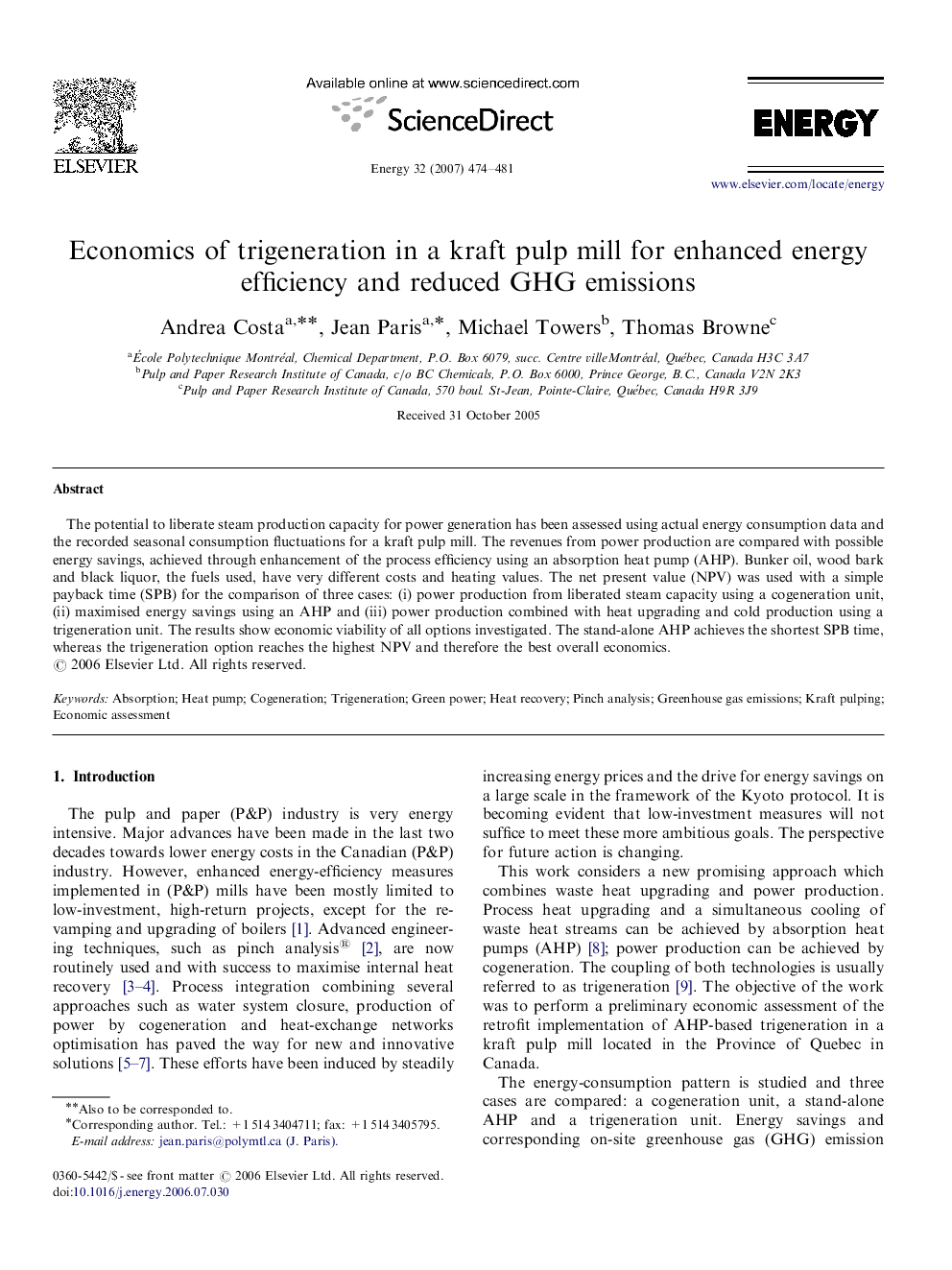| Article ID | Journal | Published Year | Pages | File Type |
|---|---|---|---|---|
| 1736063 | Energy | 2007 | 8 Pages |
The potential to liberate steam production capacity for power generation has been assessed using actual energy consumption data and the recorded seasonal consumption fluctuations for a kraft pulp mill. The revenues from power production are compared with possible energy savings, achieved through enhancement of the process efficiency using an absorption heat pump (AHP). Bunker oil, wood bark and black liquor, the fuels used, have very different costs and heating values. The net present value (NPV) was used with a simple payback time (SPB) for the comparison of three cases: (i) power production from liberated steam capacity using a cogeneration unit, (ii) maximised energy savings using an AHP and (iii) power production combined with heat upgrading and cold production using a trigeneration unit. The results show economic viability of all options investigated. The stand-alone AHP achieves the shortest SPB time, whereas the trigeneration option reaches the highest NPV and therefore the best overall economics.
